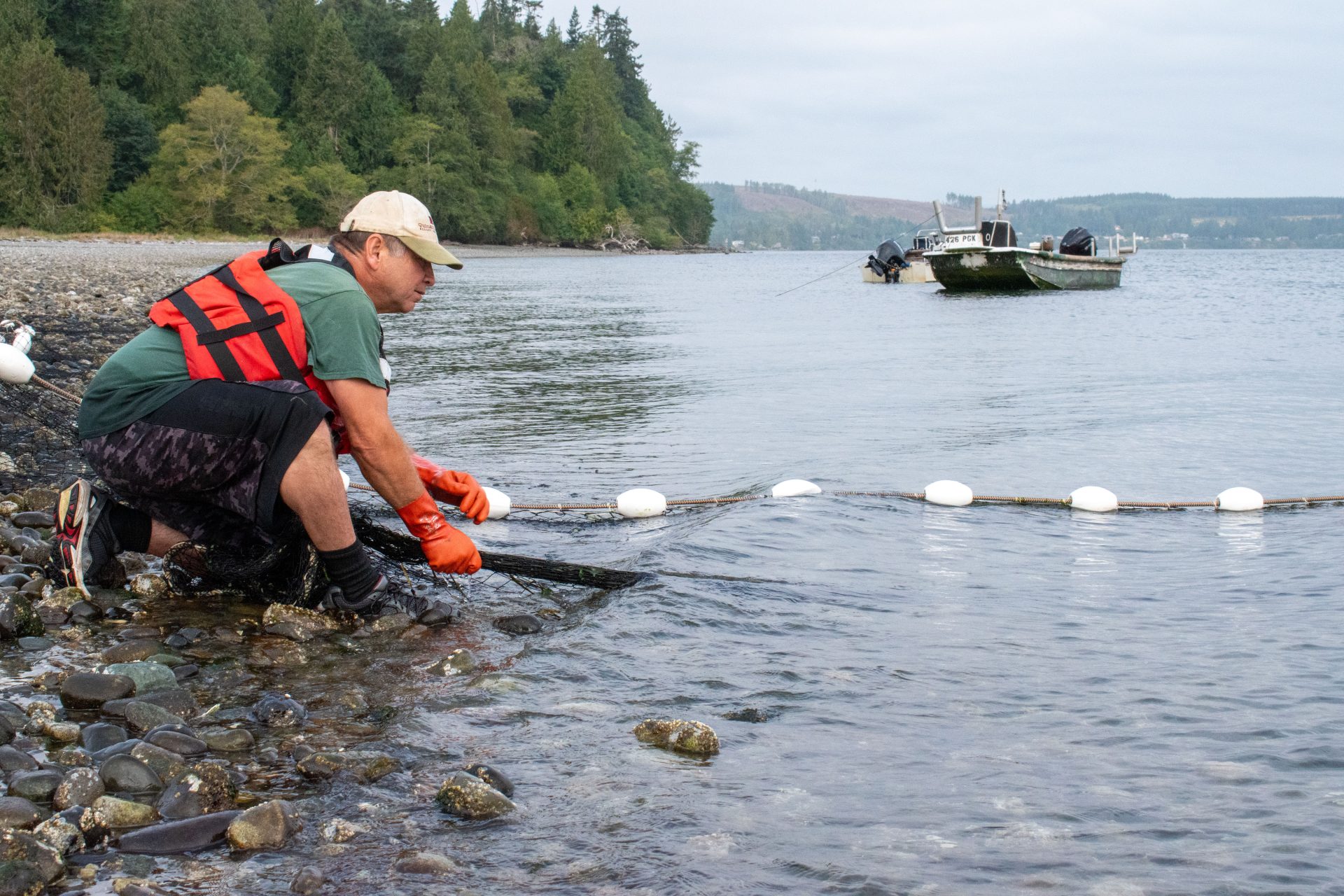The Port Gamble S’Klallam Tribe is proactively preparing for natural disasters and sea level rise.
Instead of reacting to a natural event that could severely damage the reservation, the tribe has hired engineers and scientists to gather information about its current state, including the shoreline bluff.
“Over the years, tribal members living along the shoreline have noticed changes in their yards or on the beaches below that have raised some questions and concerns,” said Kelly Sullivan, the tribe’s executive director. “This spurred discussion about preventive measures we could take to educate our homeowners and find ways to help them save their property from becoming any smaller.”
Shoreline bluffs provide silt, sand and gravel that support natural beach habitat for fish and shellfish. The shoreline is largely unmodified now, so the current work is to assess the current situation and calculate risk, as well as look at opportunities to stabilize erosion using natural vegetation and soft shoreline methods, said Deb Ladd, a geotechnical engineer contracted by the tribe.
If the base of the bluff had been previously modified with bulkheads and rock walls, the team of scientists and engineers would likely recommend removal and replacement with soft armoring, said Ahmis Loving, an engineer contracted by the tribe.
“We’re figuring out what the bluff geology is so we can determine what kind of behavior it may show over time,” Ladd said.
Climate change, including sea level rise, are also concerns.
“If the water comes to the toe of the bluff now, if it gets higher and undercuts or undermines the bluff, how much faster will it erode?” Ladd said. “We’re looking at what kind of monitoring could be done, such as placing stakes on the top of the bluffs and on the beach to watch how erosion progresses and how the beach changes.”
On the positive side, Port Gamble’s bluff is not extremely high, topping out at about 60 feetat several locations along the shoreline.
Jamey Selleck, a marine ecologist, is looking at the beach to determine how to balance functional habitat while protecting people’s homes. Sediment from the bluff contributes to the beach, creating habitat for forage fish and shellfish, including geoduck beds.
“One geoduck tract sits off those bluffs and Hood Canal has geoduck populations, all of which benefit from the sediment from the bluffs,” Selleck said. “Erosion processes are important and we don’t want to stop them completely.”
The work also will allow the tribe to set up measures to mitigate damage to the reservation from natural disasters. This work involves talking with homeowners and considering the tribe’s cemetery at the top of the bluff.
“If slopes become unstable, it would not likely be as catastrophic as places with much taller bluffs,” Ladd said.
“It isn’t just about emergencies,” Sullivan said. “We aren’t thinking there will be a catastrophe in the large sense, but losing one home or one life is considered a catastrophe here in our community.”





